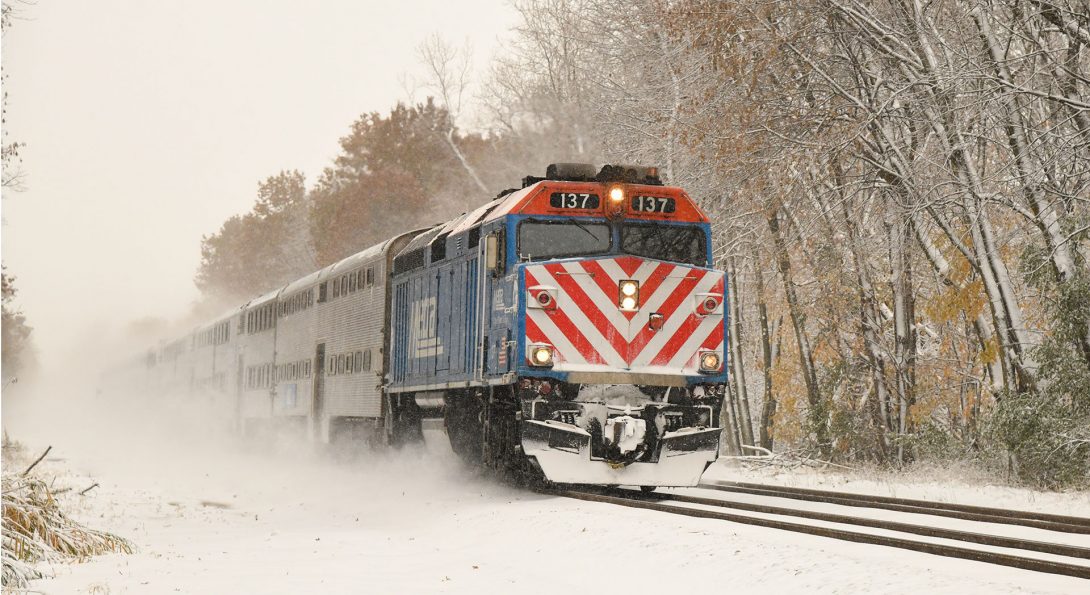Enhanced Economic Development & Increased Mobility Biggest Benefits From More Investment in U.S. Passenger Rail

Findings Gained Through Survey Conducted by Urban Transportation Center at UIC
Significant investment in the passenger rail network across the United States can result in a wide range of economic benefits including greater productivity, higher property values and reduced costs to other transportation modes. Furthermore, dollars spent on expanding and improving passenger rail will provide people with the ability to move around more freely and easily.
These are two key findings from a survey of transportation professionals polled for a study on the potential economic and societal gains realized through greater funding for passenger rail service.
Sixty-six professionals from the public and private sectors participated in the survey, which was conducted in 2016. Participants represented nine areas of the transportation industry – from agency leadership and operations management to consultants and economic development specialists.
Within the survey, participants were asked to rank five potential positive outcomes from increased passenger rail investment using a 1 to 5 scale, with 1 being the highest. Economic development (2.15) and mobility improvement (2.28) ranked at top, followed by developing a true multi-modal transportation system (2.85), maximizing public investment (4.04) and improving safety (4.08).
The study, “Results From a Survey of Transportation Professionals Regarding the Return on Investment for Passenger Rail,” was completed by Dr. P.S. Sriraj, Director of the Urban Transportation Center at the University of Illinois at Chicago. A goal of the research was to develop an integrated framework of knowledge regarding benefits gained from passenger rail investment.
Survey responses also revealed the need to focus early in the planning process on the long-term economic benefits of passenger rail expansion. As noted in the report: “According to the transportation professionals, economic potential is not considered when planning, developing and selecting passenger rail projects. This means the economic opportunities are not understood and/or being assessed properly. It is important for advocates to assess the economic benefits properly to receive proper funding and investments.”
Where is Investment Needed?
Respondents also overwhelmingly agreed that passenger rail investment must take place across all geographic levels and at the national level, as well as within regional and local levels. The need for investment at the national and regional levels ranked the highest, with each category earning 36 “High Need” responses out of the 66 respondents.
That premise was supported in comments made during interviews with participants. “The notion of passenger rail being heavily underfunded was not only clear from the survey, but from the interviews with transit professionals,” the report stated. “These notions are founded upon fact.”
Barriers to Investment
Perceived barriers to passenger rail investment was another major element of the survey. Financing was listed as the leading barrier by 44 percent of the participants, followed by political opposition (33 percent), lack of citizen desire (15 percent) and planning timetable (9 percent).
“It is no surprise that the respondents concluded that financing and political opposition serve as the largest barriers to passenger rail investment,” the report stated. “Passenger rail has been well underfunded. Even a review of the literature demonstrated how passenger rail and public transit is underfunded. By 2017, it is projected that there will be a $66 billion deficit to maintain America’s transportation infrastructure and $133.9 billion deficit to improve it (American Public Transportation, 2007).”
“Results From a Survey of Transportation Professionals Regarding the Return on Investment for Passenger Rail” was funded through the Metropolitan Transportation Support Initiative (METSI), a research initiative of the Illinois Department of Transportation. Dr. Sriraj served as principal investigator with assistance from former UTC research assistant Brian Tompkins and Ms. Jolene Molitoris, former Administrator for the Federal Railroad Administration.
Read an abstract and get access to the complete return on investment for passenger rail research report.